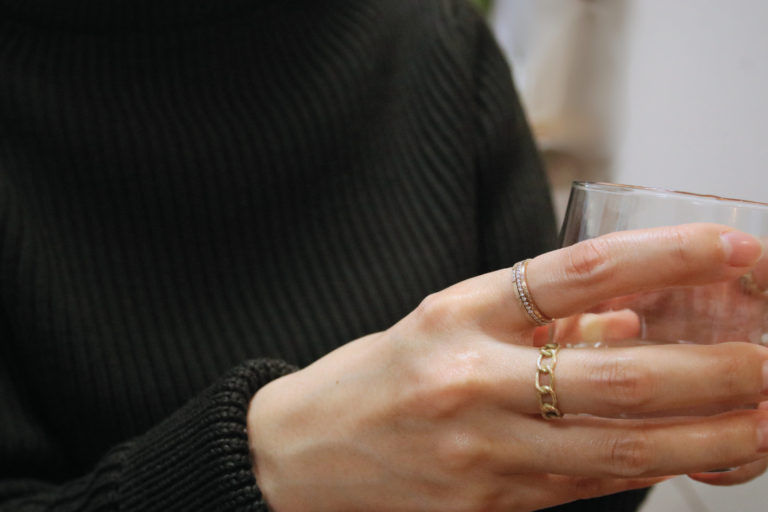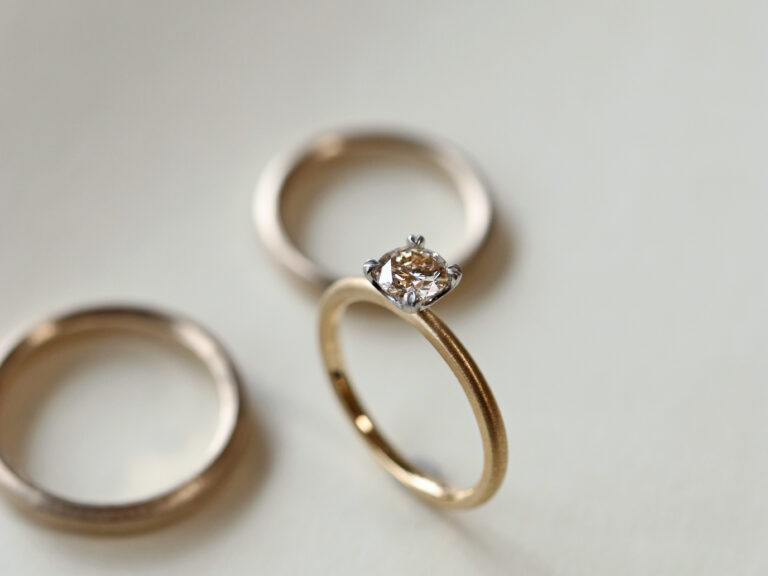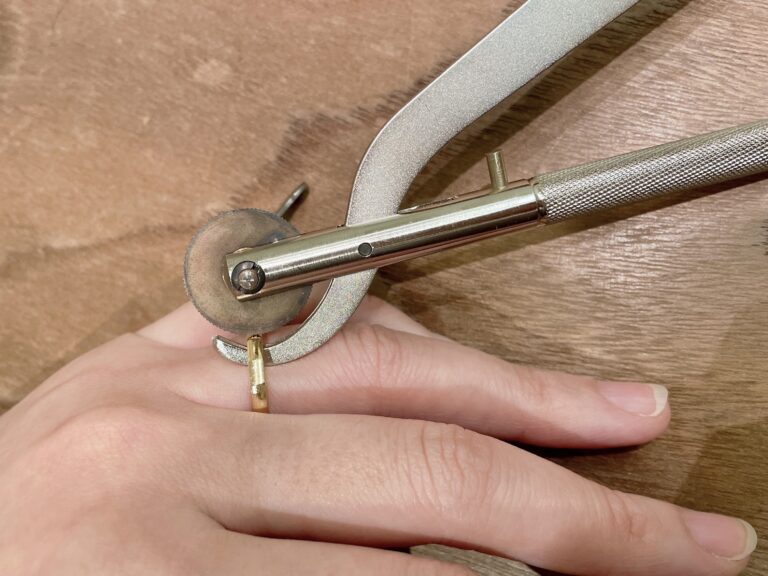Now, continuing from the last issue, here is a report on the TV shooting!
<Last time,Click here to read the article "Customer Service Scenes for Repair Requests." > "The first time I saw the first time I saw the first time I saw a new product. >
On the second day of filming, we finally filmed the repair work in the atelier.
The repairs can be divided into two main categories.
First, resizing.
The current size is too small to fit into the ring, so it will be widened in size to be used as an engagement ring.
The next step is to install additional stones that have been removed.
We will include a seventh stone, an amethyst, which we believe was attached.
Let's start with the resizing.
To increase the size of a ring, the ring is cut, the metal to be increased (called base metal in jewelry terminology) is added between the pieces, and the ring is welded (called brazing in jewelry terminology) back together to increase the size.
The difficulty in resizing this ring is that it is nearly 70 years old, almost antique, so as far as we can see, it is gold, but there is no engraving to indicate the type of base metal. Normally, precious metals are stamped "Pt900" (platinum) or "SV925" (silver), and 18-karat gold is stamped "K18" or "750," but the ring we received had no such stamps, so we assumed it was 14-karat gold from the color and so on. We decided to proceed with the repair.
Without knowing the type of bullion, the biggest risk is that the ring itself will unravel or crumble when the ring is welded because the melting point is unknown.
Fortunately, this time we were able to use small pieces of bullion that we cut off to reduce the size and to be sure beforehand that the melting point was not lower than expected, which at least eliminated that concern.
The next difficult point is that since the ring contains a stone, if heat is transferred to the stone during welding, the stone will discolor or crack.
The secret weapon that comes into play is "wet tissues!
Although the photo is too small to show, we wrap a wet tissue around the stone and weld the part to be resized on the opposite side of the stone with an oxygen burner.
Gold is not a very good heat conductor, so for a while, only the area where the fire is burning will be red hot. After a while, the heat is transferred to the entire ring and steam rises violently from the tissue, but the stone is protected from the heat because the temperature never exceeds 100°C unless the water evaporates completely. The part to be welded is at about 1000 degrees where the base metal melts, and the stone part is below 100 degrees.
It is a true craftsmanship that requires quick hands and precision!
Especially in the case of rings for repair, there is no room for failure because there is only one ring, and even more so in cases such as this where the type of metal is unknown, it is a one-time-only game where you do not know if you can weld until you actually heat the ring in a fire.
I was able to resize it safely and successfully with one weld!
Now, the next step is to set the stones.




